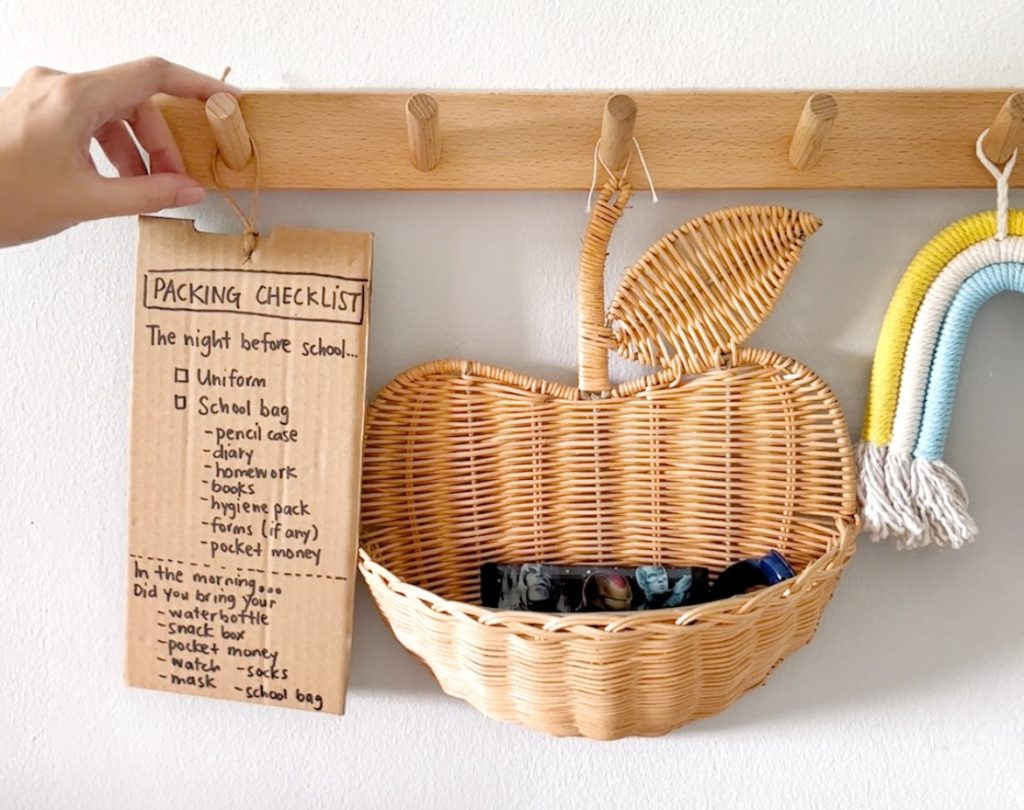Inside: How do I stop nagging at my kids? What can I do instead of nagging? What does nagging do to a child?

No one wants to be the parent who’s always nagging.
What are the effects of nagging on your child, and what can you do to stop nagging? Read on to find out! Sometimes all you need are a few good tools in your toolbox
The impact of nagging on your kids
Nagging can lead to resentment between the parent and child
When you nag, you become tired of parenting because it seems like nobody cares, or appreciates you. To the children, it feels like their parents don’t get them. This is a lose-lose situation.
If you are determined to stop nagging, read on to find out how to model good communication skills, and foster good relationships between you and your children.
Nagging sends the message to the children that their parents don’t trust them
When we nag at them, children may assume that we’re not sure if they can complete the assigned tasks, and it makes them feel incompetent.
Nagging teaches kids to stop listening – they tune out because they assume that we are going to repeat the same thing, or say something bad about them. And no one likes to hear someone saying bad things about them, they’ll just stop listening!

Nagging takes responsibility away from the kids.
We often nag because we want our kids to prepare for school on their own, eat their meals, take a shower, do their homework etc. These are the duties of our kids – not ours. If we want our kids to be responsible, we have to give them the opportunity to take ownership and we have to stop nagging.
In summary, nagging leads to resentment between the parent and the child, it leads to poor relationships and it models poor communication skills.
5 tips on what to do instead of nagging
Tip #1: If you want your kids to listen to you, you have to listen to them first
There is usually an underlying reason why they find it hard to cooperate. It’s more than not doing homework, or refusing to put on socks.
It could be a lack of communication skills, motivation, poor emotion regulation skills, or even a lack of motor skills! Listen your kids, find out why they are struggling to cooperate and work through the struggles with them.
I encourage you to download my free guide: Why are kids not cooperating, and what to do about it. In the guide I share the underlying reasons why they are not obeying and how to get your children to cooperate.

Tip #2: Join their world before instructing
Children operate from their emotional brain more than their logical brain.
So they cannot understand that time is running out and they have to chew their sandwich at double the speed. What you can do instead – join their world!
For example, you can say, “Mmm, you are enjoying your fav ham and cheese sandwich. Let’s look at the time. It’s 8am! We are going to be late for school. Do you think you can put on your Superman powers to chew faster? Show me how you chew!”
When there is more connection, you stand a chance to get more cooperation from them.
Tip #3: Make eye contact and have your child repeat after you
Don’t nag at a distance; move from kitchen to where your kids are. Make sure your kids are looking at you in the eye.
“We are going to have dinner in 5 minutes. Can you repeat what I’ve just said?”

Tip #4: Keep your instructions short
Before giving these instructions, we have to guide them so they know what you mean. Make time to teach them.
Before they know what you mean when you say, “Socks,” you have to show them where all the socks are placed, how to put them on and where to sit. Guide them through the whole process, be supportive and encourage them.
Tip #5: Use visual charts and lists to set children up for success
Kids are still kids, and they are bound to make mistakes or forget the entire checklist. We can help them take steps to independence by giving them visual charts and reminders.
They will feel more assured when they can see exactly what they need to go to go from the start to the finish line – even if they mess up one step in the routine, they know exactly what to do to get back on track.

Click here to download the Morning and Bedtime Routines visual charts.
In this bedtime routine youtube video, I share how I use the visual charts for smoother bedtimes

You can also use checklists like these! In my video How to stop nagging at your kids (5 tips to get kids to listen), I share an example of a packing checklist I use for my son so I don’t have to nag at him as he prepares to go to school.
Having these visual charts and lists are so useful in helping kids complete routines independently! That’s how they can feel that they are competent.
To recap, 5 tips on how to stop nagging at your kids:
Tip #1: If you want your kids to listen to you, you have to listen to them first.
Tip #2: Join their world before instructing.
Tip #3: Make eye contact and have your child repeat after you.
Tip #4: Keep your instructions short.
Tip #5: Use visual charts and lists to set children up for success.
There’s no shortcut
As parents we have to work on the communication skills to bring about more connection, and finally more cooperation from our kids. Whatever struggles they may be having, think of every step or misstep as building blocks for them to learn to be independent and more responsible in the future.

